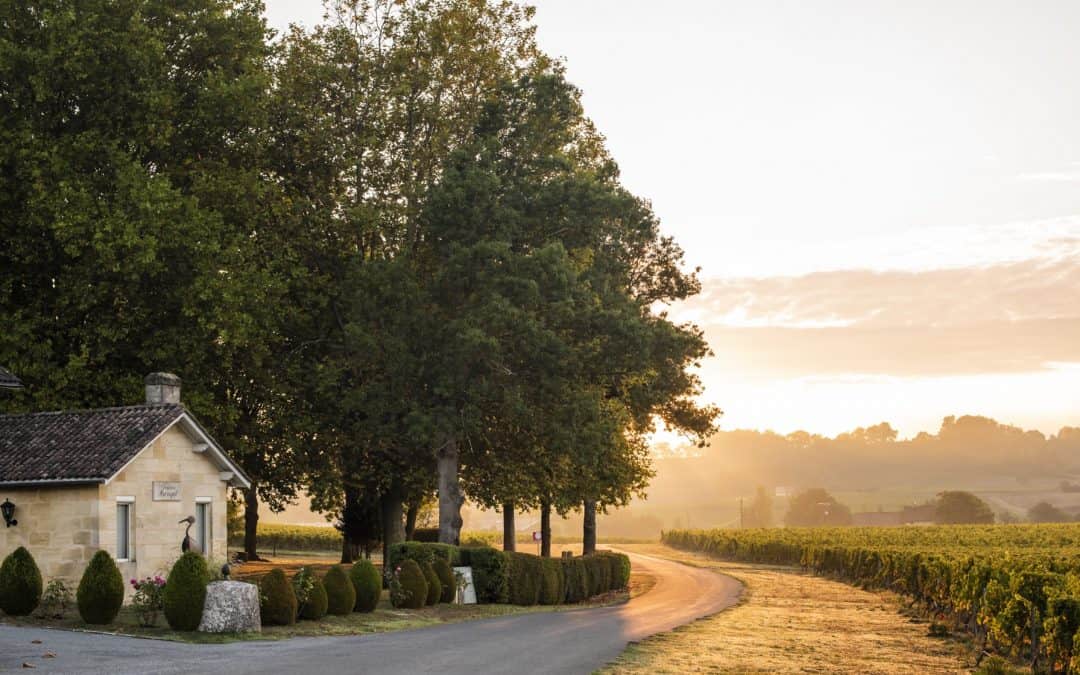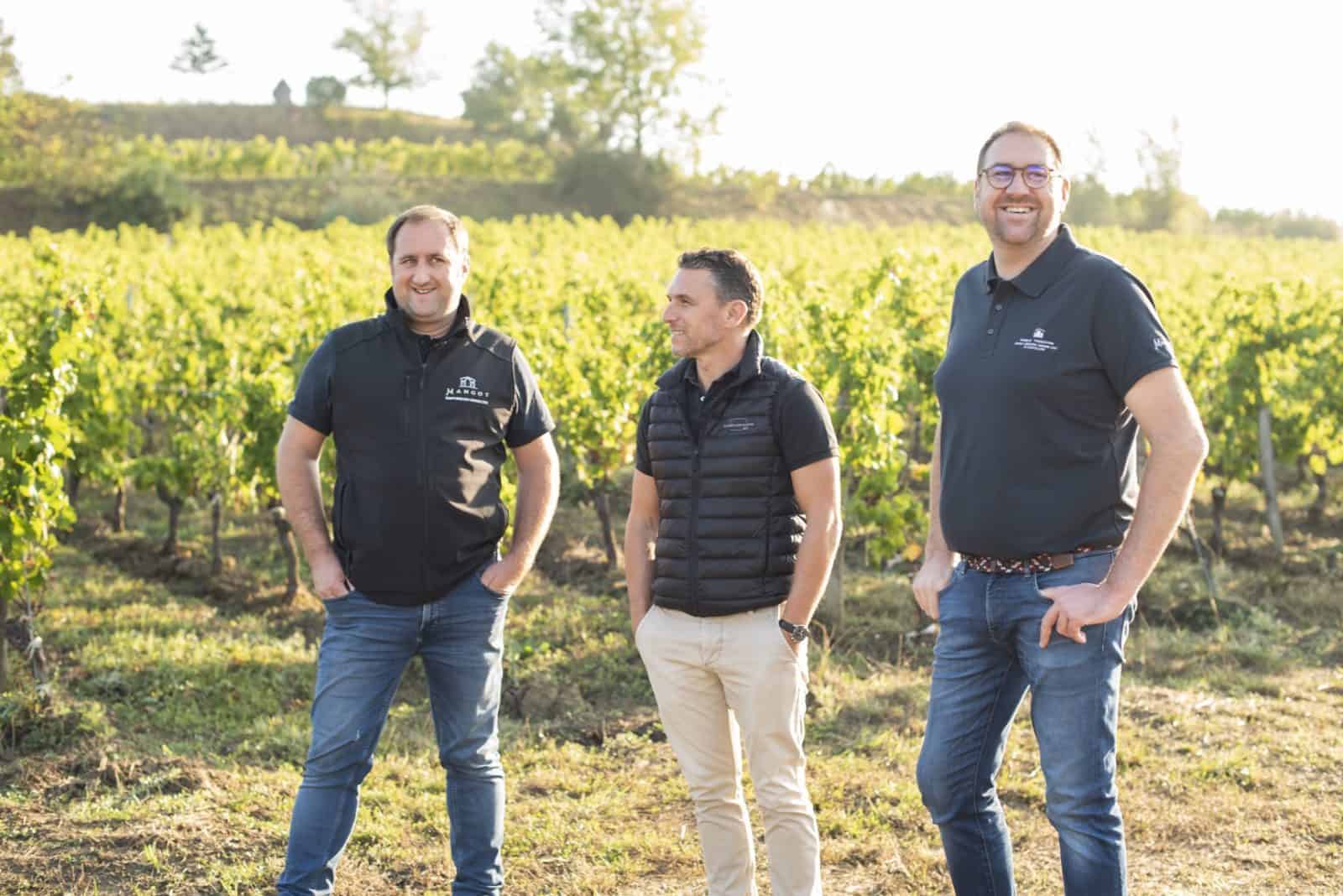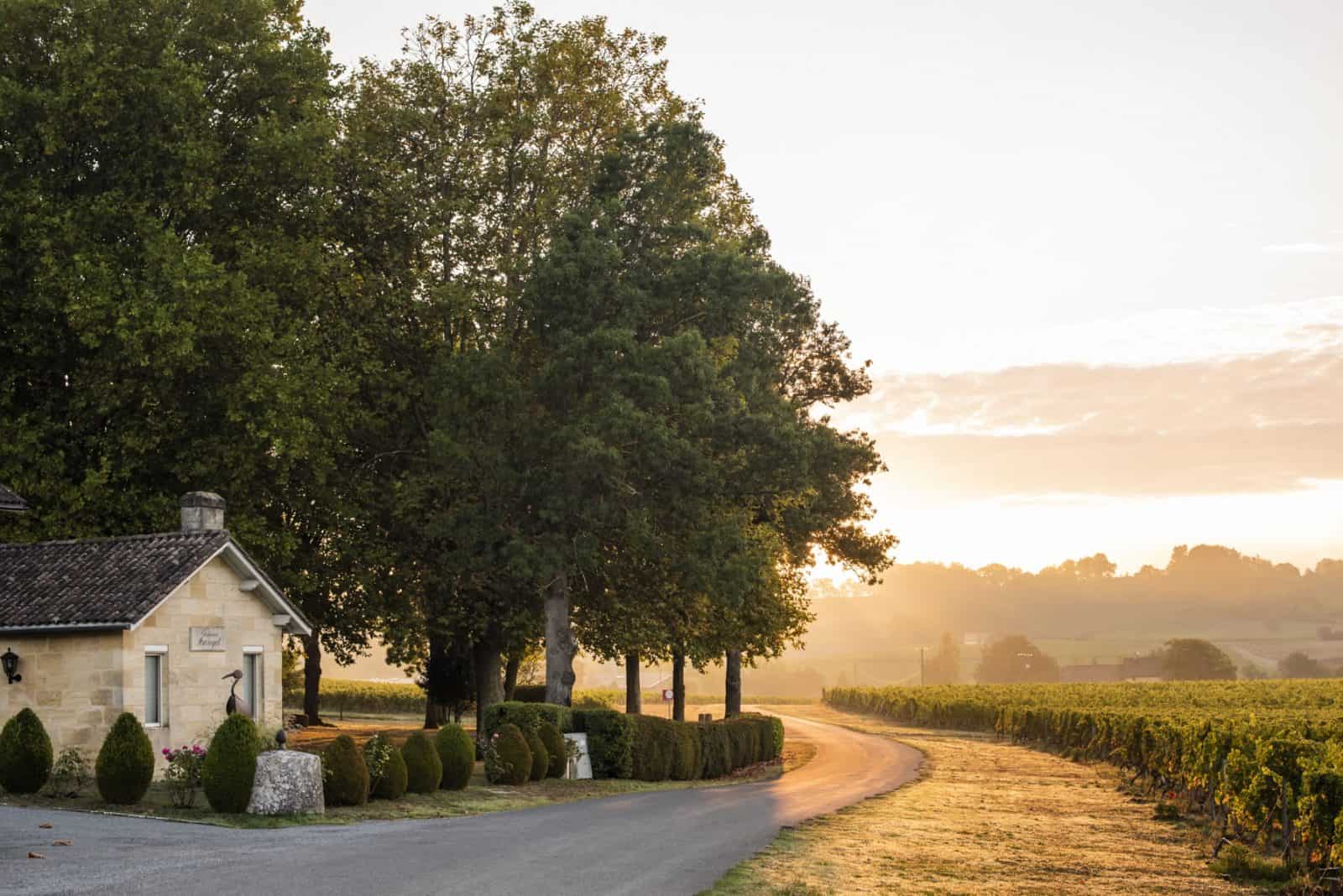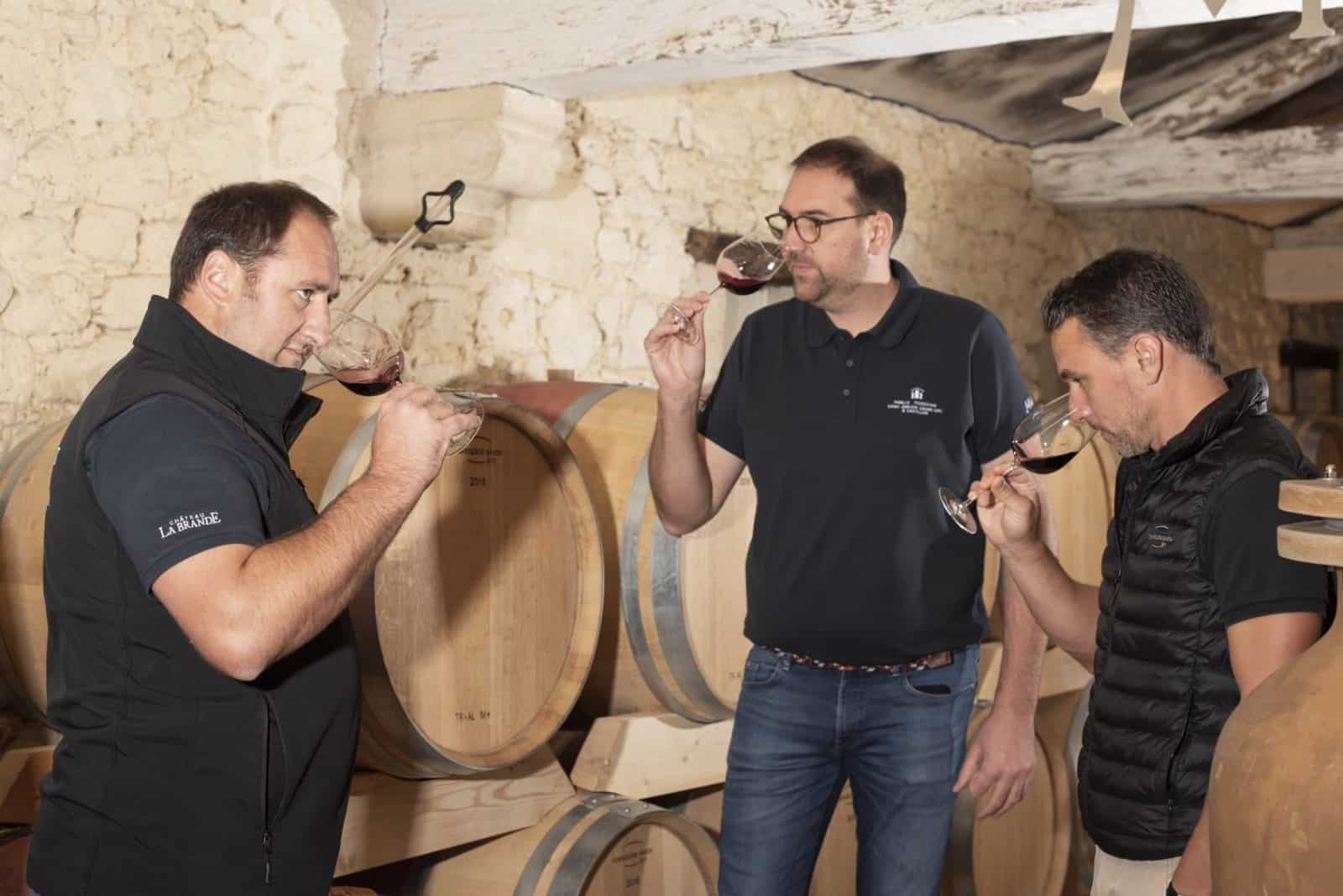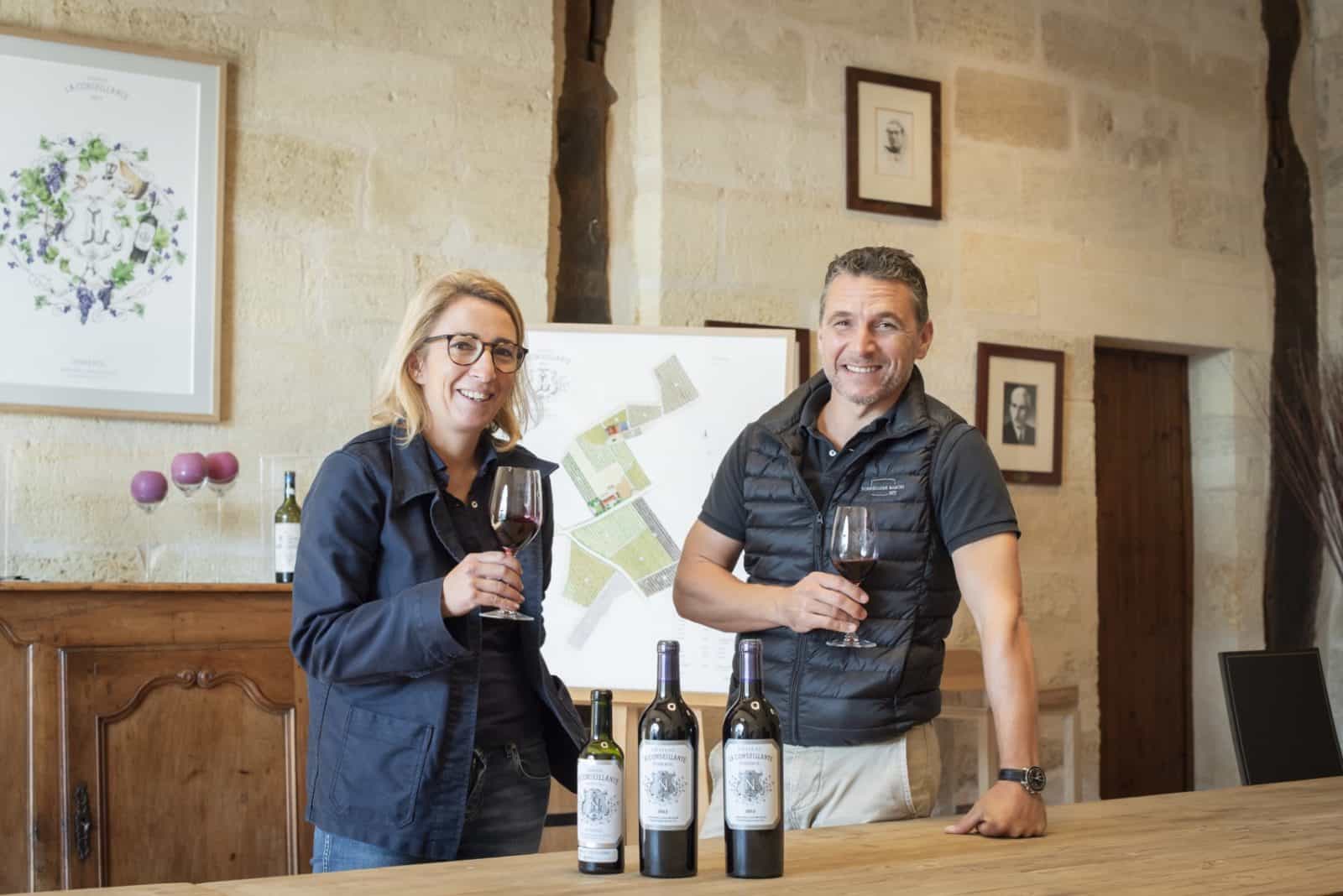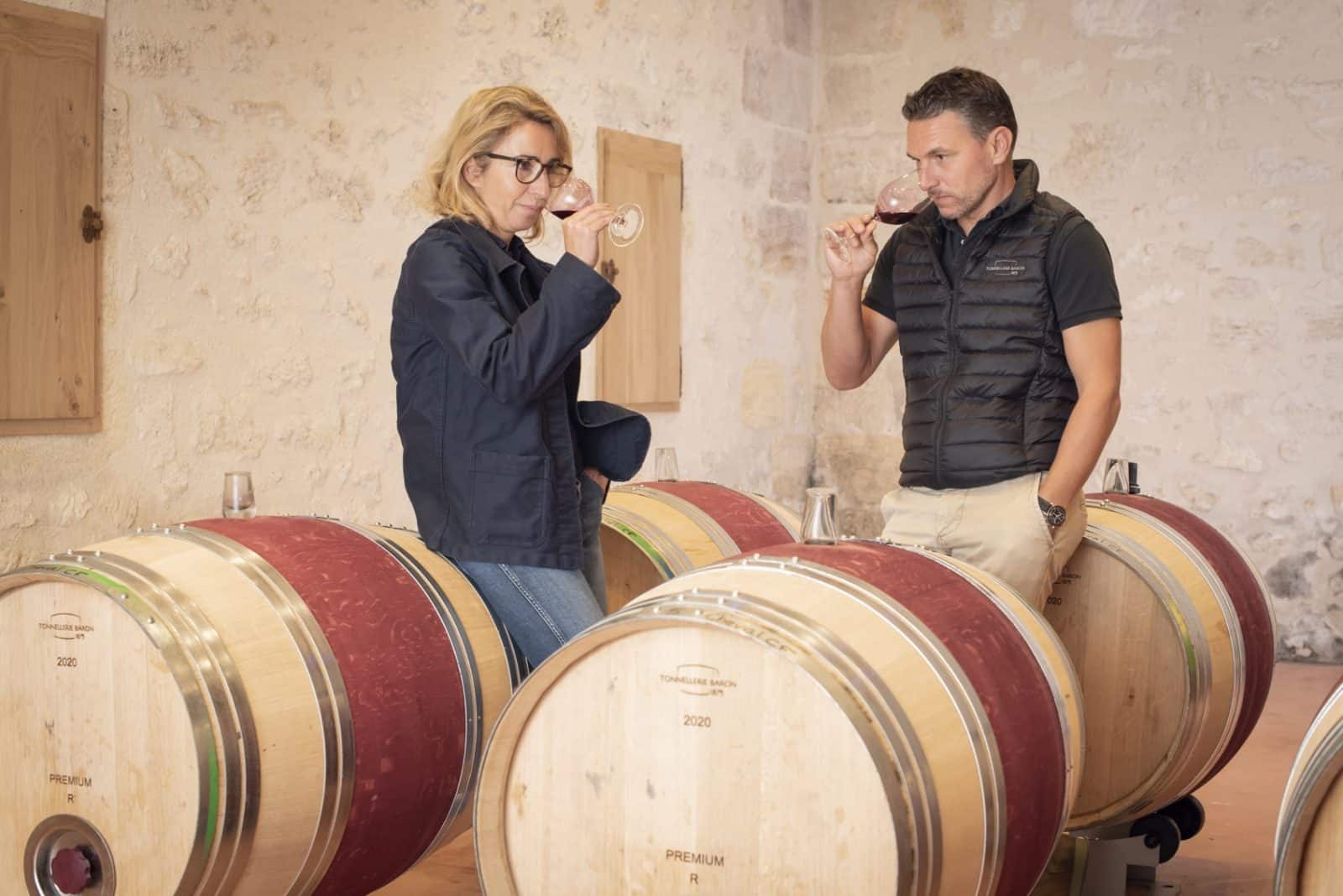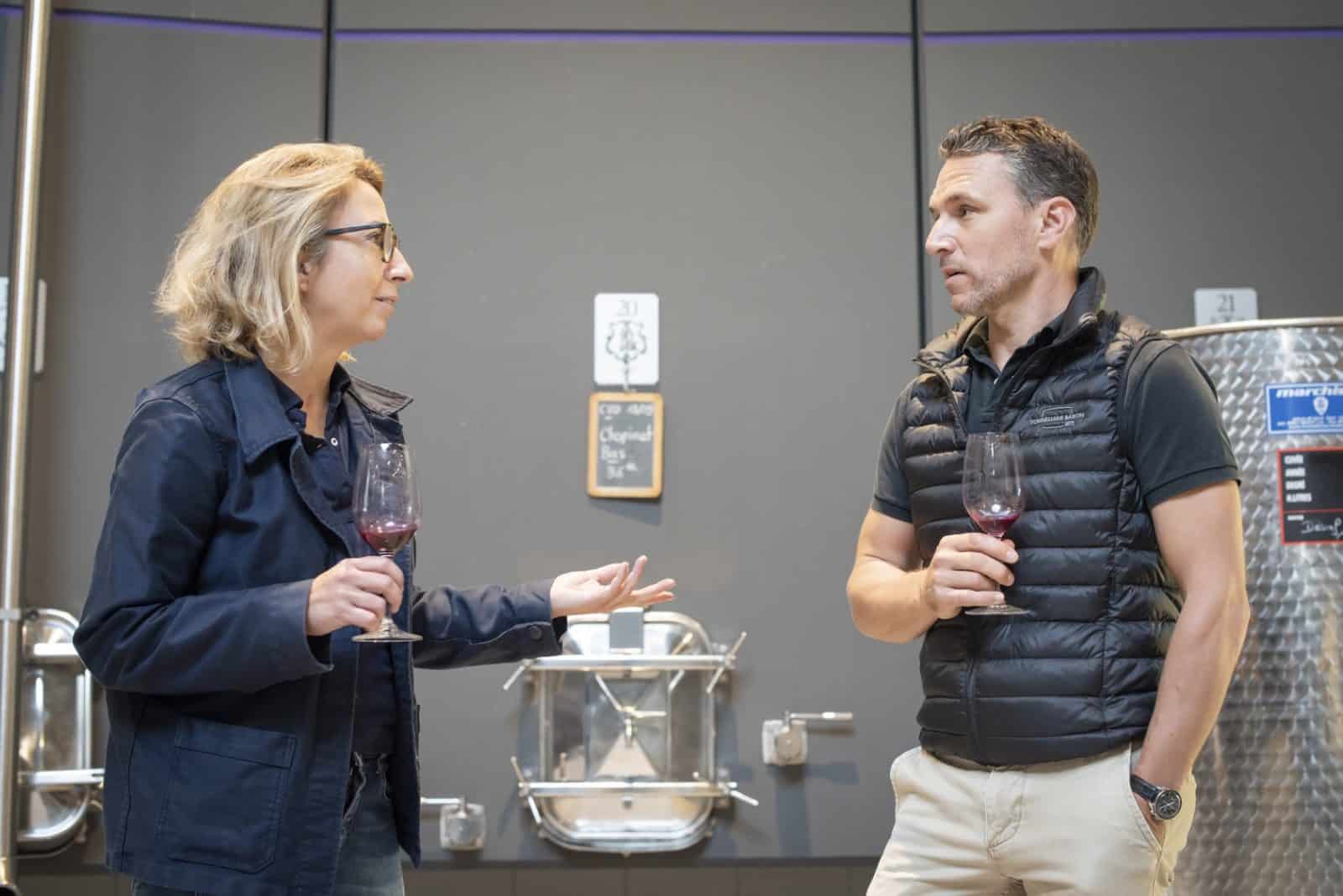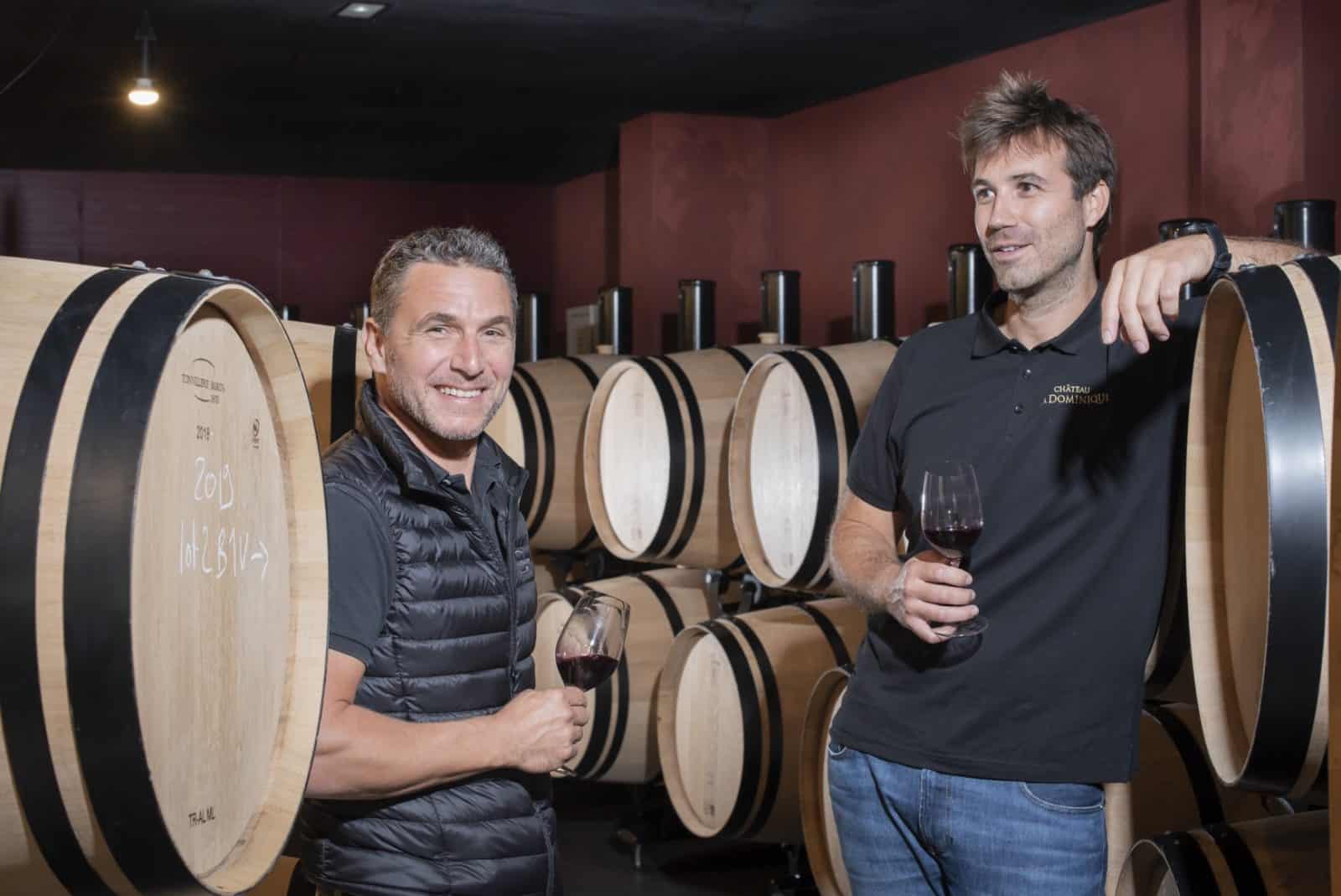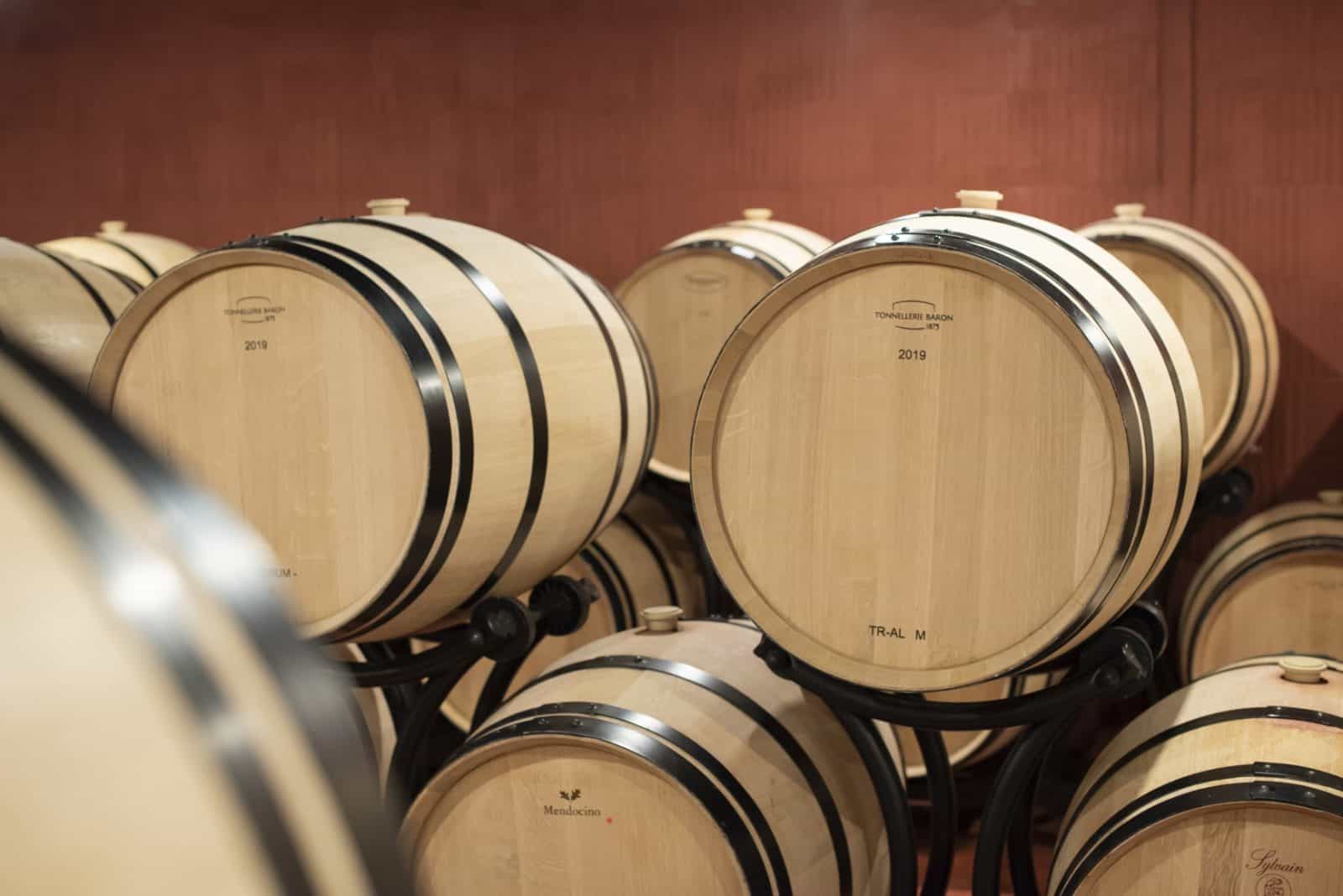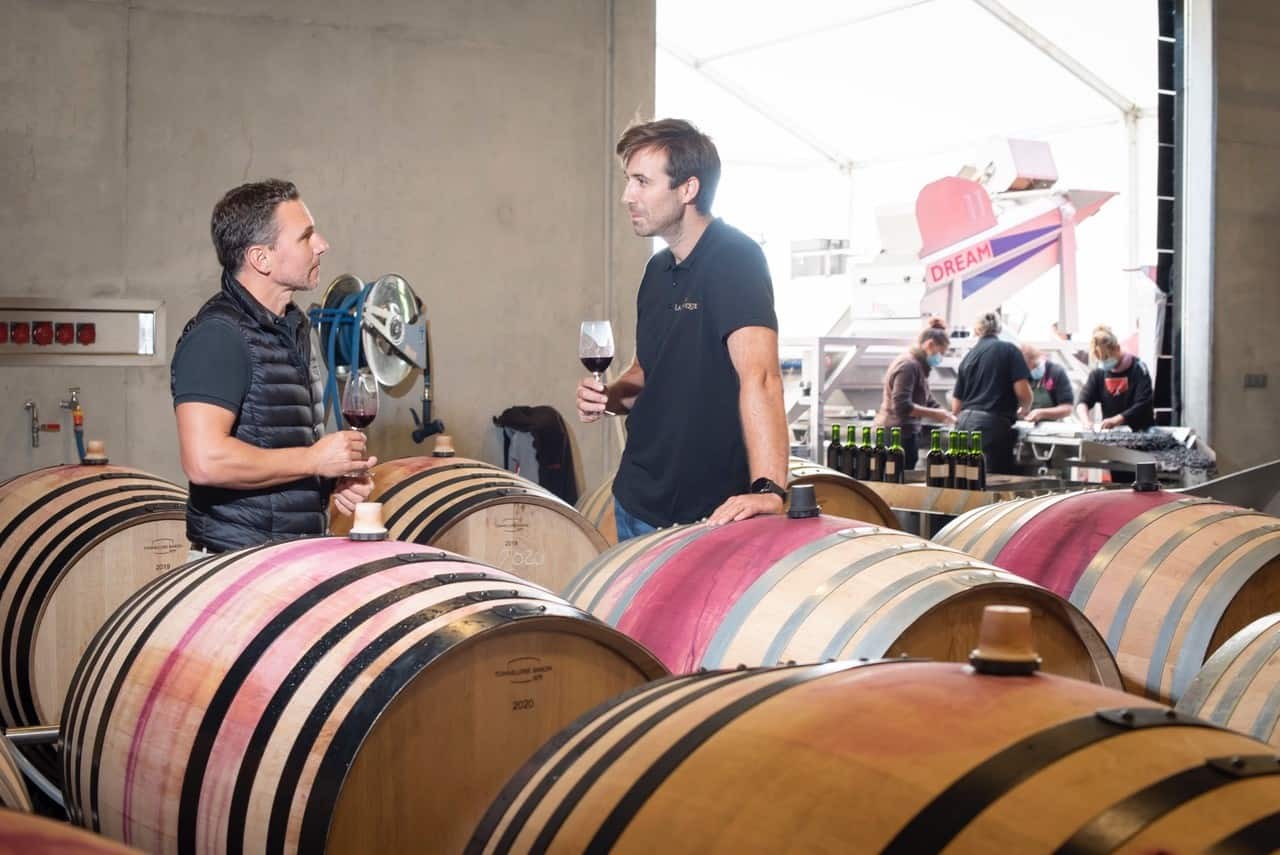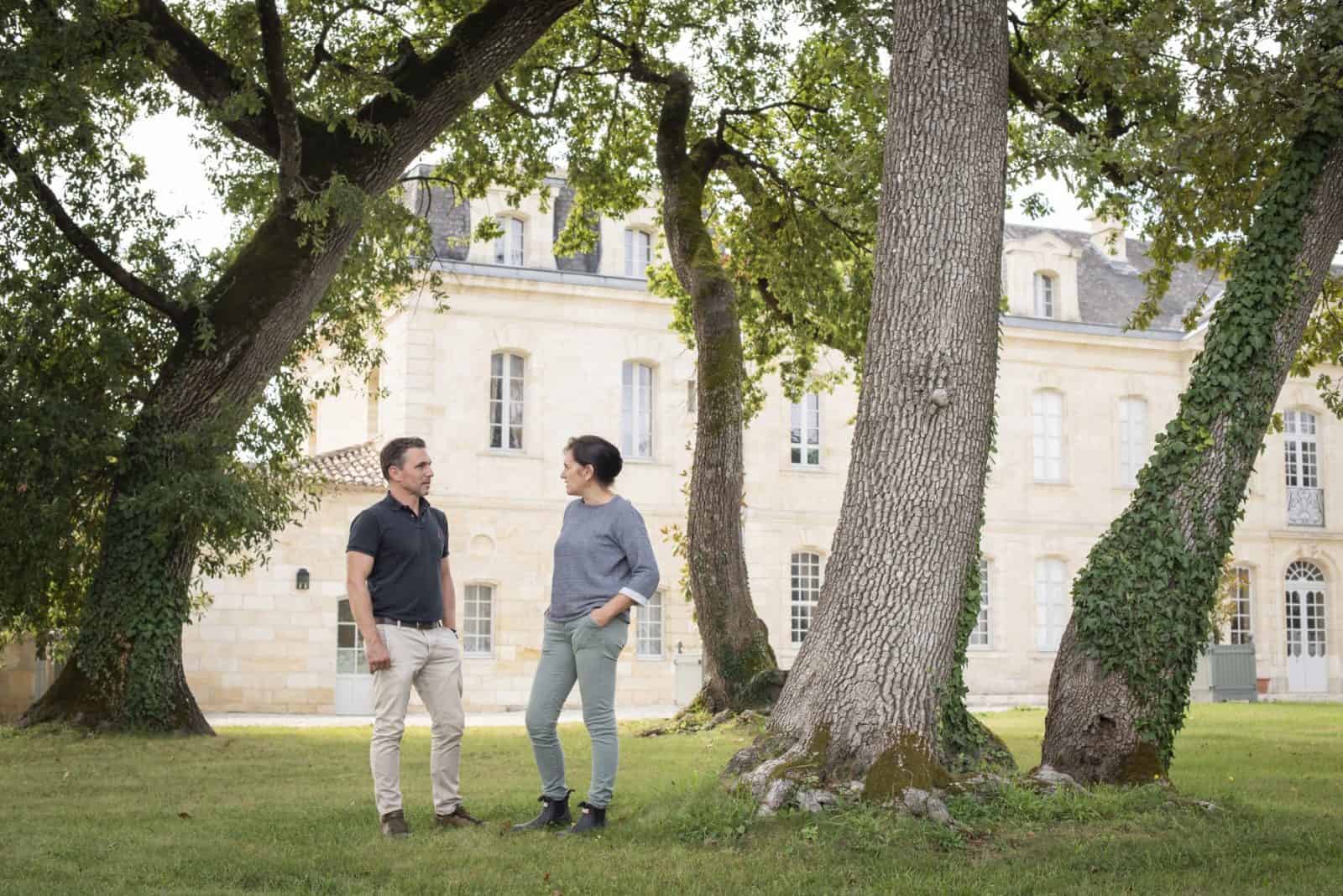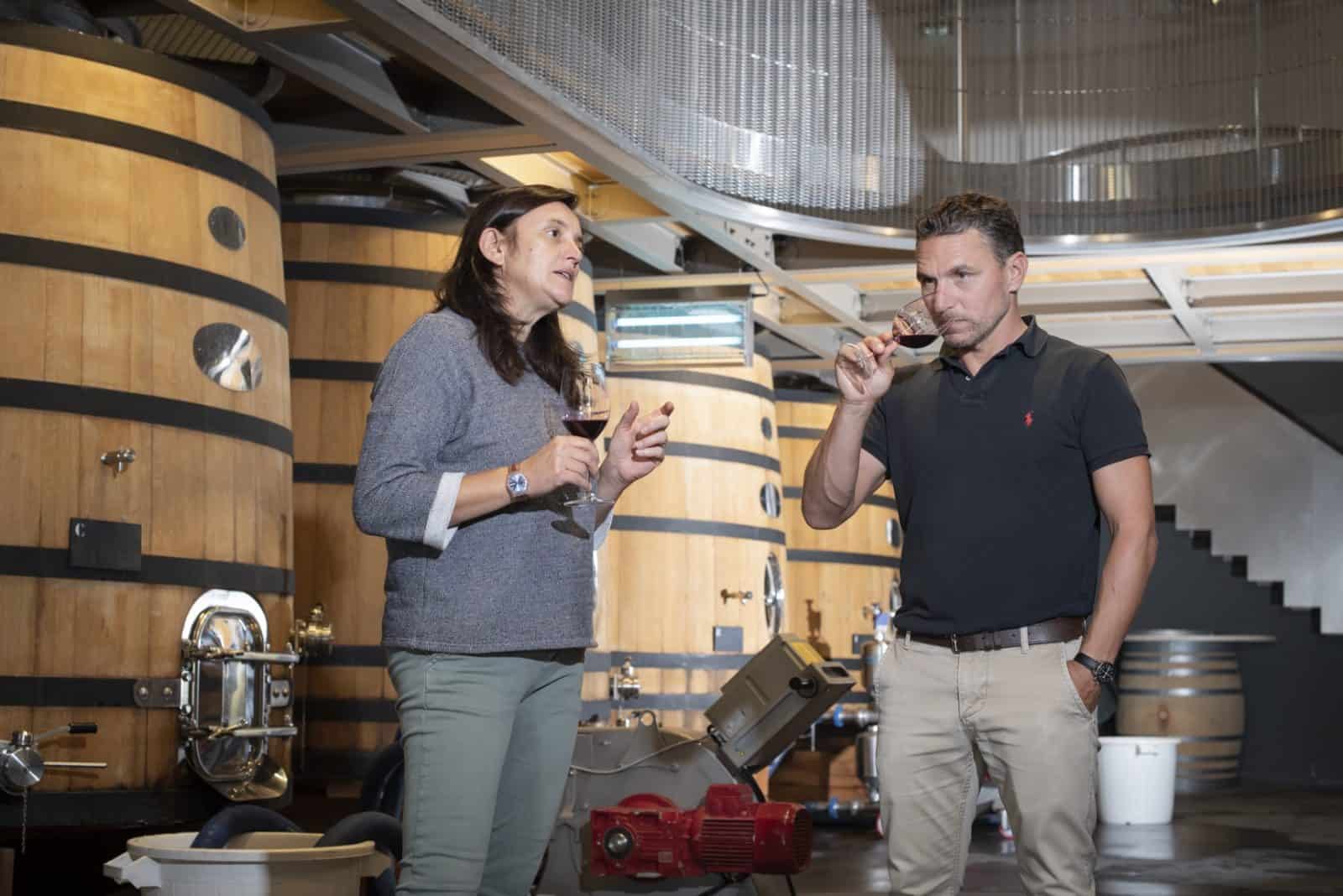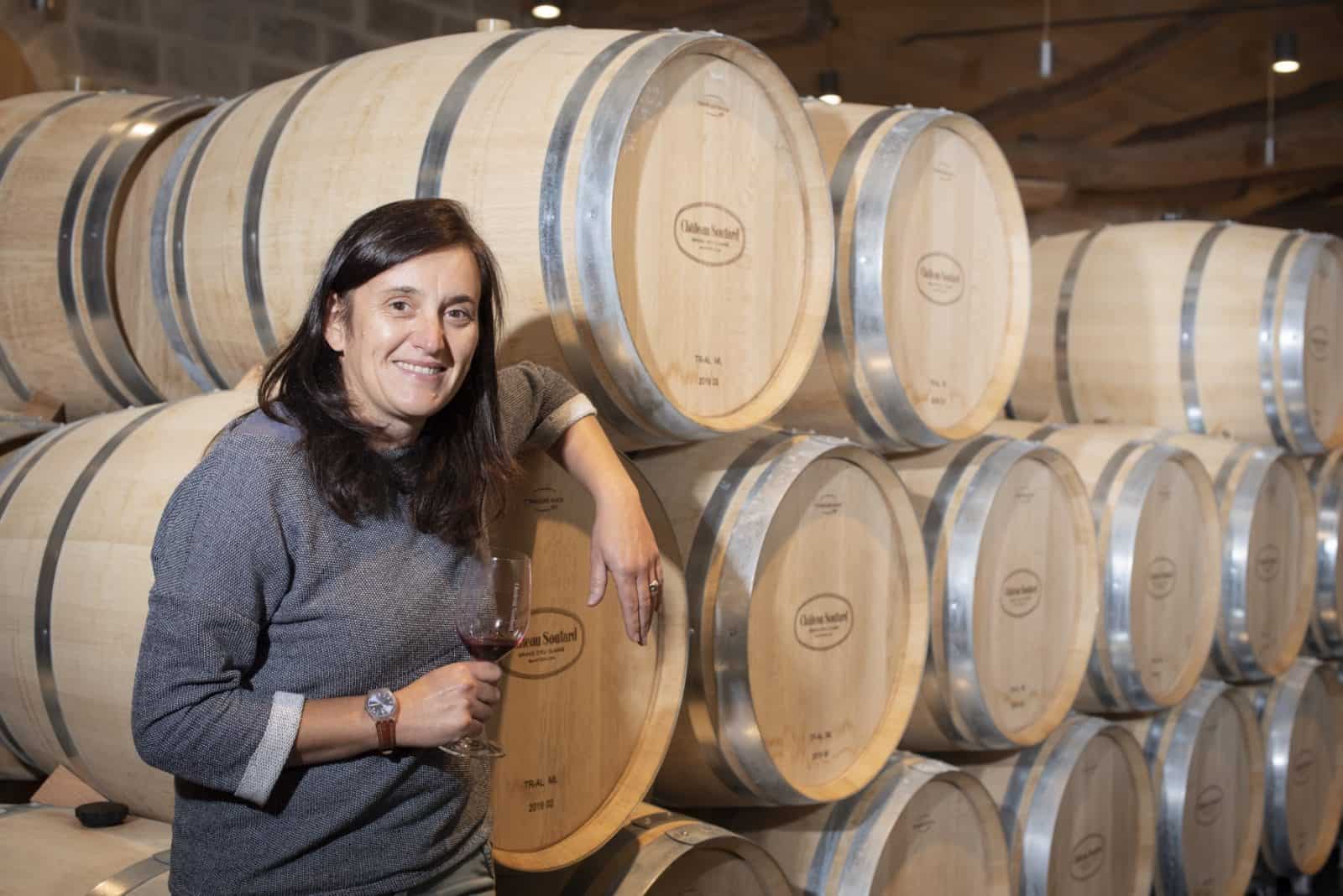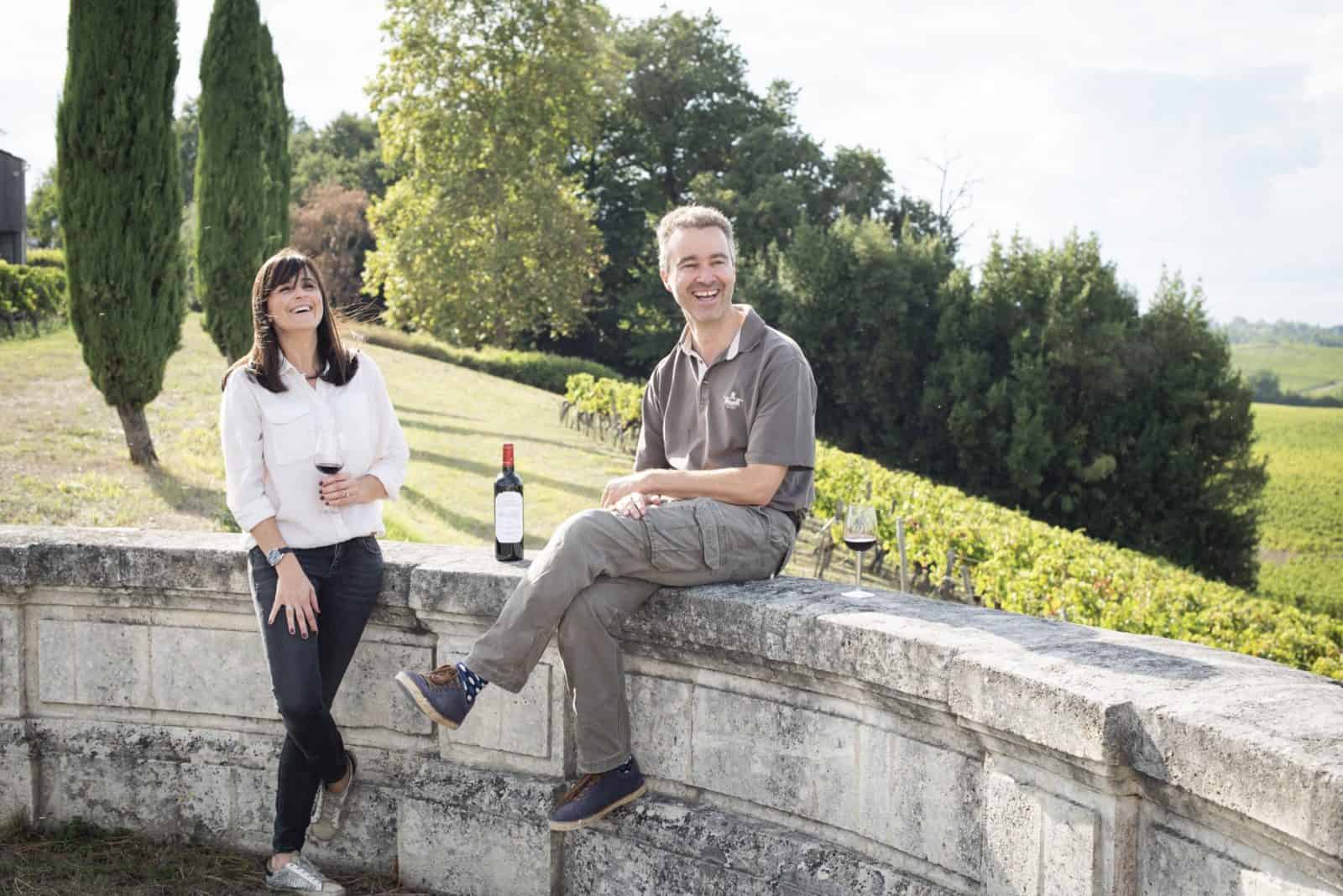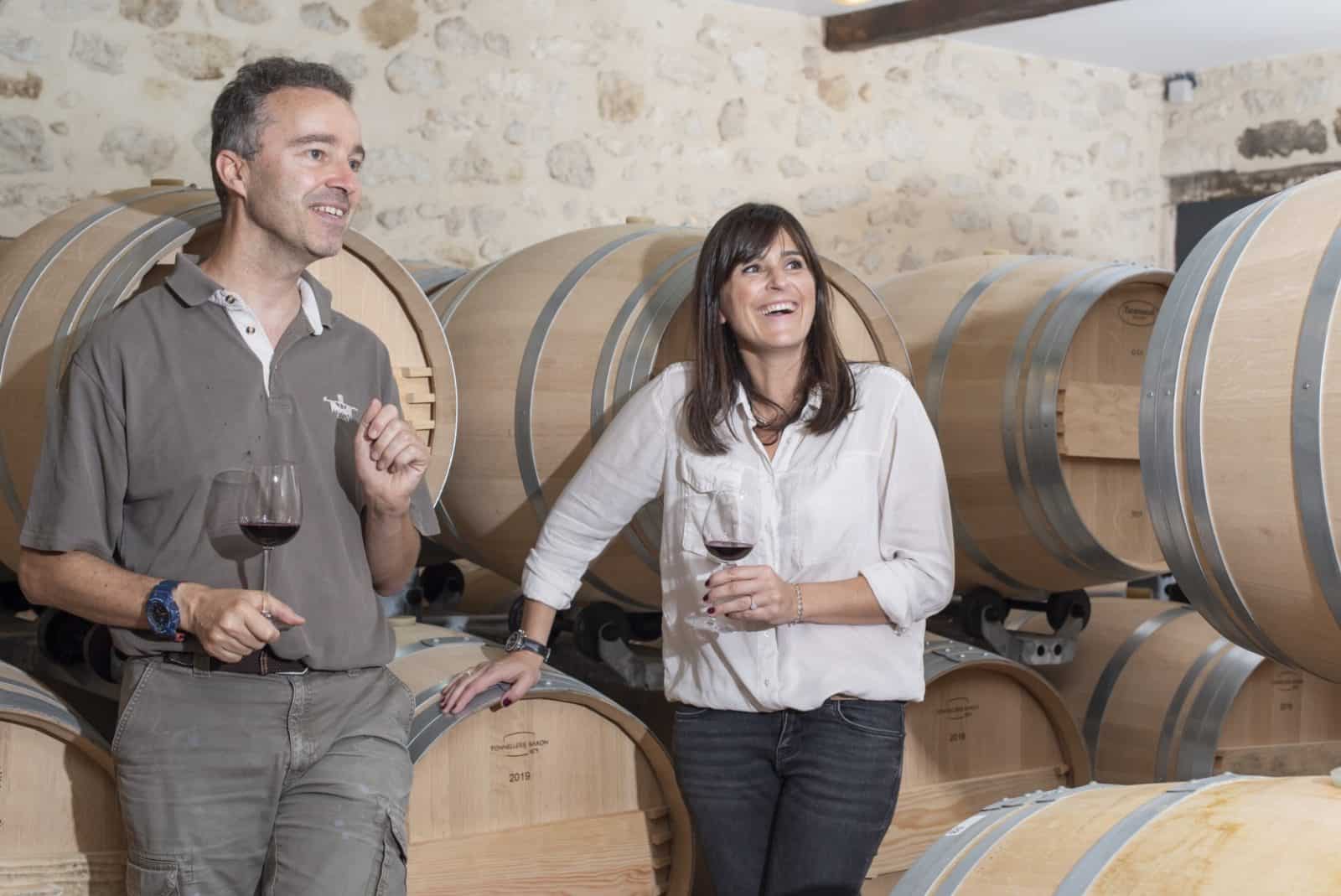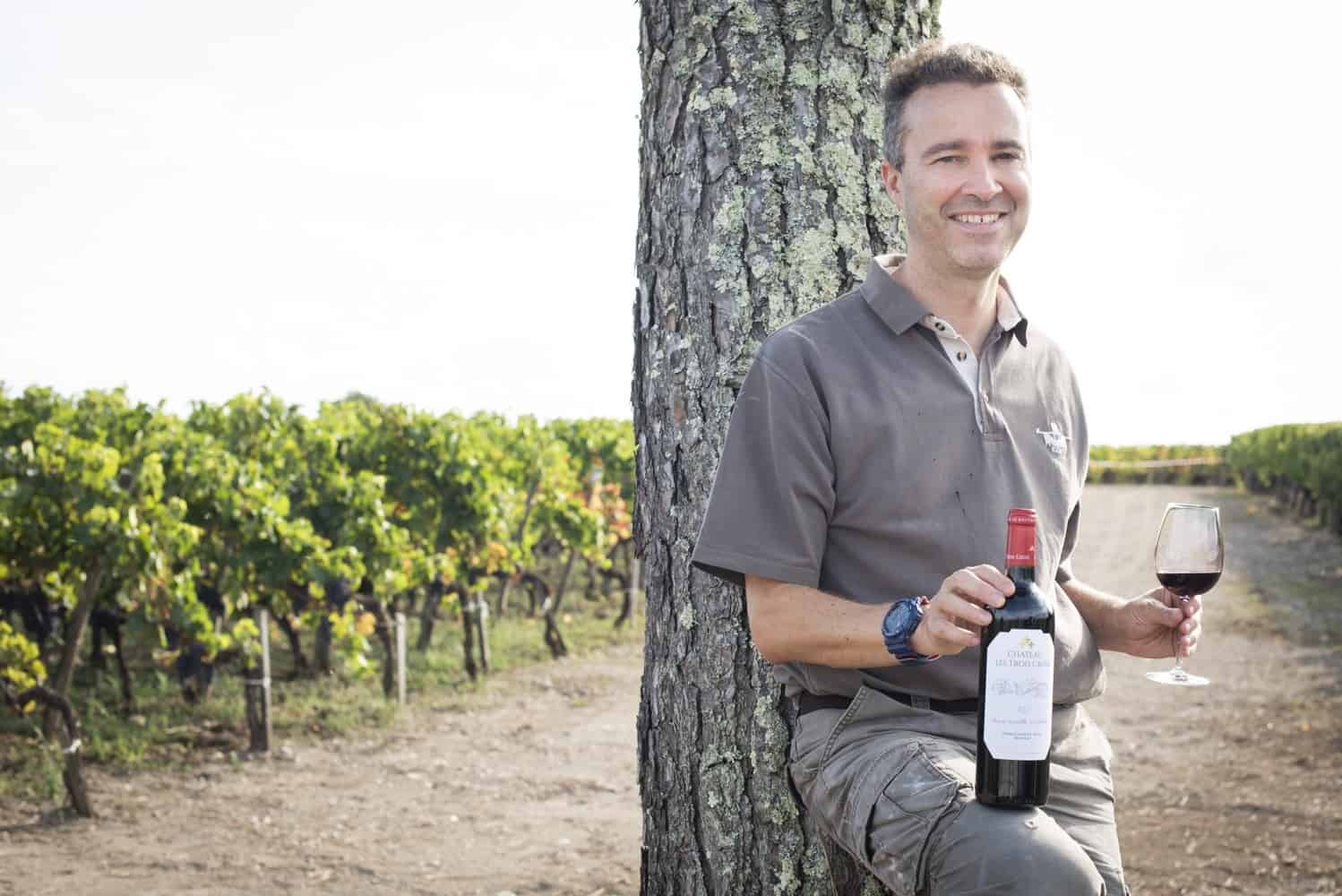End of September, we hit the road to visit our clients on the right bank of Bordeaux. Usually, they are still harvesting Merlot grapes at this time, but the winemakers are already busy in the cellars, to look at the Cabernet that remains on the vines.
Todeschini Family – Château Mangot – Saint-Emilion Grand Cru
Under the autumn sky of Château Mangot – everything comes earlier this year – the Todeschini brothers greet us, relieved, the end of a “solar marathon”, as they say.
How can the vineyard go through such a struggle, going from a water excess to a lack of it?
“A nature feat, a better support of the vines, a conversion to organic farming that started 10 years ago that enables us to overcome the difficulties, without a shock, the vine is in balance”, they tell us.
“Balance”, the big and broad topic that keeps us busy and follows us during the whole process of wine production, from the vine to the ageing. At Château Mangot, Karl and Yann are the witnesses to their vineyard evolution and the participants of deep reflection in the cellar.
Here, the collaboration with Tonnellerie Baron started in 2008 with Vinification Intégrale® tests for the Cuvée Mangot Todeschini. Since then, it is no longer Vinification Intégrale® barrels that enter Mangot’s wine cellar every year but Premium or Tradition-Allier barrels with medium-long-low temperature toasting.
“With our organic and biodynamic growing practices, the grapes quality changed. It would have been a mistake to keep the same toasting pattern that we used to do before”.
Marielle Cazaux – Château La Conseillante – Pomerol
We head to Pomerol where Marielle Cazaux also finished the harvest the day before.
“2020 vintage has not been without stress.”, she already congratulates the team in place for their faultless adaptation, at the heart of this vintage’s great paradoxes!
The Vinification Intégrale® system was brought by her to Château la Conseillante to reinforce the mid-palate. “This is a very small-scale use and it will stay as is, we will never go above 8% of the blend, for creaminess and depth”.
Tonnellerie Baron first arrived in the cellar of Château la Conseillante in 2002. Since that time, Premium barrels and long toasting have presented their own, distinctive approach every year.
“The texture of Baron barrels, densifies the mid-palate and brings an aromatic hint of violet, black fruit, spices and dark chocolate”, a reassuring aspect for this wine maker at heart who, along with Patrick, the cellar master, continues to use the traditional racking techniques.
Yann Monties – Château La Dominique – Grand Cru Classé – Saint-Emilion
There is just a road to cross, the one between Pomerol and Saint Emilion, and we meet Yann Monties, who freshly joined Château la Dominique as technical director.
For Tonnellerie Baron, this is the design of the circular ageing cellar, imagined by the architect Jean Nouvel, that enabled the installation of the patented system OXOline. The Baron barrels have already been part of this great blend since 2008.
Yann provides a fresh look at the 2019 vintage. “When I arrived 18 months ago, I tasted all the barrels of the cellar and I requested to lower the toasting level for each of them”. For Yann, the strength of Bordeaux wines is their freshness. “Let’s bring back timeless expressions of this terroir”.
The tasting of the day supports his speech, “by rectifying the toasting criteria, wines are purer, more precise, fruit-driven and we even brought some creaminess”.
Véronique Corporandy – Château Soutard – Grand Cru Classé – Saint-Emilion
We then wondered what exactly Tonnellerie Baron barrels bring to the limestone terroir of Saint-Emilion and we went to talk to Véronique Corporandy at Château Soutard, a pleasure for our eyes as beautiful as this property is.
This place is the embodiment of limestone, minerality, with its white dazzling stone that suggests a taut wine.
“That is the challenge of ageing”, Véronique tells us. “To respect the tautness of the wines, I work on different toasting and oak blends, between Premium and Tradition-Allier”. An exercise that is differently led at Château Larmande and more recently at Château Petit Faurie de Soutard, where Véronique brought Baron barrels into the cellars “because it is also a matter of men and women and the choice of a cooper is a personal matter!”.
Bertrand Léon – Château Les 3 Croix – Fronsac
The day ends, above the Fronsac appellation. Bertrand Léon leaves his sorting table, proud of his Merlot and suggests that we take a pause above the hills, the main distinguishing feature of Fronsac. “Because a happy winemaker is not a winemaker”, Bertrand can only encourage changes, development in the wine cellar, the ones that make him progress and Baron, to be continuously improving, together.
Here, ageing lasts between 15 and 18 months with the objective of not marking the wine with obvious oak. Toasting is long and soft. The balance between the 4 coopers that have been chosen by Château les 3 Croix is solid. Each year the team learns what the vintage has to offer, and adapts. “2020 heat is not an issue”, for this consultant to Château d’Esclans in Provence, who ages his rosés in 600-liter Baron barrels and produces wonderfully balanced wines.

